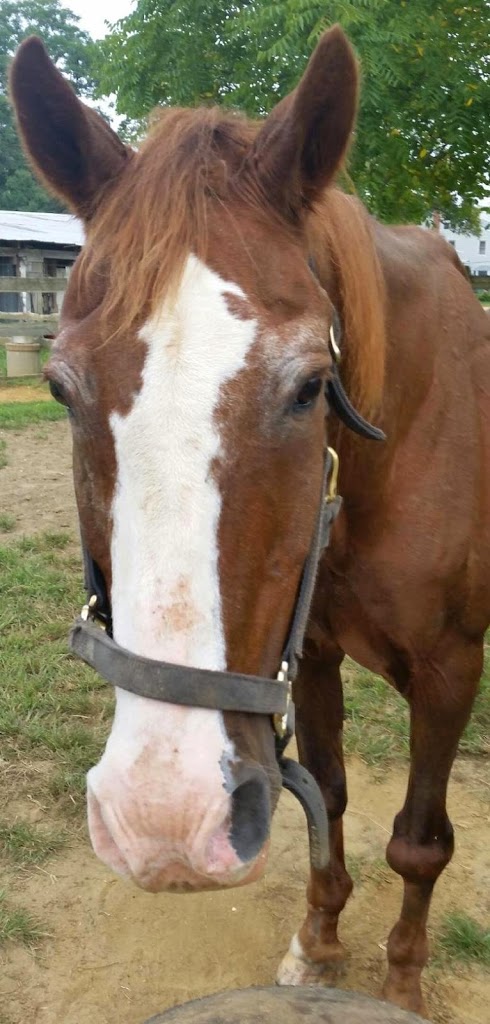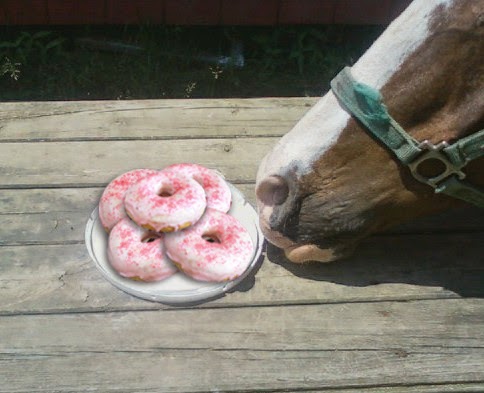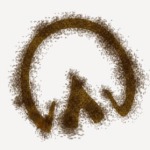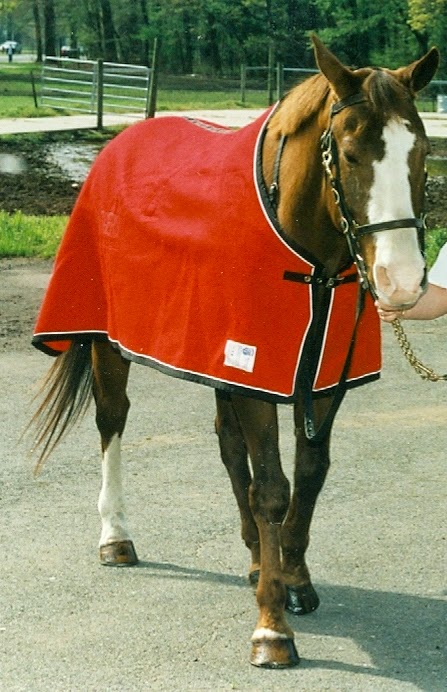 The general wear and tear on my body has resulted in arthritis, a condition which eventually will affect every horse. Arthritis also can affect humans too. Arthritis is a combination of inflammation and degeneration (wearing away) of the cartilage of the ends of the bones, which make joint bending (called flexion) and weight bearing painful.For some older horses the symptoms remain mild, such as stiffness in the morning after being inactive in the stall. As we begin to move and warm up the stiffness lessens. For others the symptoms can be more severe leading to lameness. As you can see in my picture I have excessive bone growth in my left knee. Although arthritis can be crippling, if caught in its early stages it can be managed successfully with oral glucosamine supplements (think of it as a vitamin) or injectable therapies, which are similar to the lubricating fluid found in joints. Anti-inflammatory drugs are used in combination with these supplements to provide pain relief.
The general wear and tear on my body has resulted in arthritis, a condition which eventually will affect every horse. Arthritis also can affect humans too. Arthritis is a combination of inflammation and degeneration (wearing away) of the cartilage of the ends of the bones, which make joint bending (called flexion) and weight bearing painful.For some older horses the symptoms remain mild, such as stiffness in the morning after being inactive in the stall. As we begin to move and warm up the stiffness lessens. For others the symptoms can be more severe leading to lameness. As you can see in my picture I have excessive bone growth in my left knee. Although arthritis can be crippling, if caught in its early stages it can be managed successfully with oral glucosamine supplements (think of it as a vitamin) or injectable therapies, which are similar to the lubricating fluid found in joints. Anti-inflammatory drugs are used in combination with these supplements to provide pain relief.
An older arthritic horse can be made more comfortable with certain changes in foot care. A consultation with the farrier and veterinarian regarding the best way to trim and shoe is highly recommended. Soft footing while working is a must, as well as, extra deep bedding for rest. The more a horse can move the less stiff it will become since moving provides joint lubrication. Providing a maximum amount of turnout and not confining to a stall unless medically necessary is ideal.
Lastly, it is crucial that an arthritic horse not become obese as the extra weight will increase the stress on the legs, so from now on I need to watch my doughnut intake! You can learn  more about taking care of an older horse like me by checking out the Equine Science Center’s fact sheet, “ Care for the Older Horse: Diet and Health “.
more about taking care of an older horse like me by checking out the Equine Science Center’s fact sheet, “ Care for the Older Horse: Diet and Health “.

Lord Nelson

